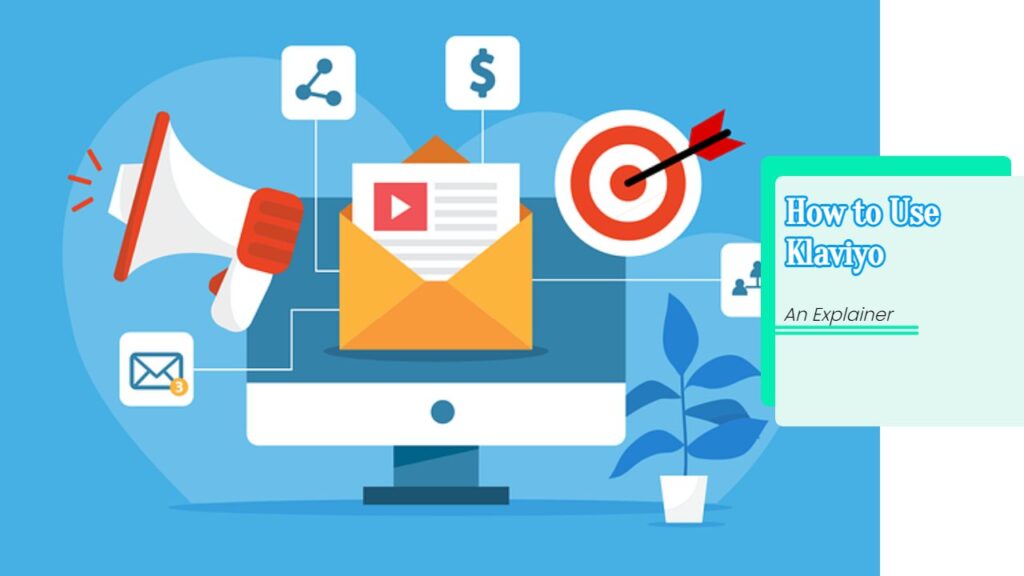Creating a Product Launch Marketing Plan
So, you’re gearing up to launch a new product, huh? 🎉 Developing a solid plan is pretty much your golden ticket to making sure your product introduction doesn’t flop. A killer strategy will not only spotlight your product’s cool features but also get the word out to the right folks. Let’s dive in!
Getting Why a Marketing Plan Matters
Think of a marketing plan like your GPS for the product launch. It offers a vibe of structure and direction, showing you what moves to make from start to end. According to Smart Insights, having communication whizzes at your side is key in flashing the perks of your new toy and picking top channels to chat it out online. This whole prep work is super important for keeping folks interested and racking up those sales.
It’s not just about the launch; a great plan checks how happy customers are throughout the product’s journey. Tuning in to what people are saying means I can figure out if my marketing’s hitting the mark with the company’s goals and what customers really care about (Planful).
Teamwork Makes the Dream Work
Bringing in a team approach rocks the house, getting different parts of the company on the same page for a fab launch. By teaming up with product developers, sales gurus, and the customer service champs, I can weave together a strategy that covers every angle of the new product hitting the market.
Getting folks from different departments to chime in helps blend various angles and wisdom into the marketing game plan. When every corner of the company throws in their two cents, the message you’re sending out just clicks together better. This teamwork smoothens the path for throwing out faster tweaks when the feedback pours in.
Using methods like the RACE Framework is a game-changer for smoothing out the collab groove. It nails planning, sprucing up, and priming the customer journeys across big-time moments, making sure everything about the launch syncs up (Smart Insights). This mash of talents and ideas cranks up the chances of a smash-hit product launch that strikes a chord with who you’re trying to reach.
Want a full walkthrough on laying down a marketing plan? Check out our piece on how to create a marketing plan. And, looking at a sample marketing plan template might give you some sweet tips on how to get your strategy in ship shape.
Utilizing the RACE Framework
I’ve gotta say, when it comes to cracking the code for a top-notch product launch marketing plan, the RACE Framework has been my trusty sidekick. Its structured vibe is just what you need to plan, steer, and amp up customer experiences at key moments during a product push.
Understanding the RACE Framework
RACE breaks down to Reach, Act, Convert, and Engage. It’s like a customer-focused map that helps marketers figure out all those must-have interactions for knocking a launch outta the park. Let me break it down for you:
| Stage | What’s the Deal? |
|---|---|
| Reach | Spreading the word and drawing in fresh faces who might just love your product. |
| Act | Getting folks interacting with your brand and all the juicy deets. |
| Convert | Sealing the deal; turning those interested souls into buyers. |
| Engage | Building that “feel-good” connection so customers keep coming back for more. |
By hitting each of these stages right, I can map out my marketing moves pretty effectively. This model’s all about tuning into customer vibes and using that intel to steer the launch ship.
Implementation in Product Launch
So, kicking things off with the Reach part of the RACE. This is where I pull out all the stops with a solid marketing lineup: think social media buzz, email blitzes, even a bit of classic advertising. Market smarts (market research) are my guide to hitting the right notes with my crowd.
Onward to Act, where I go big on getting people involved — maybe with some interactive bits, sneak peaks, or demos that catch eyes. This stage lays down the red carpet for driving folks to our website or landing page.
At the Convert phase, it’s about making the checkout process as smooth as butter. I’m talking killer calls-to-action and maybe some sweet limited-time deals or email magic (email marketing campaign strategies). The aim? Make buying easy-peasy to boost those conversions.
Finally, we hit Engage. Post-launch, I’m all about keeping the conversation going—sending follow-ups, asking for thoughts, and keeping customers on our side. According to the data, this stage packs a punch in boosting conversion and making the launch a win (Smart Insights).
Fitting the RACE Framework into my launch game plan is like having a roadmap, making sure I’ve got every customer interaction covered. If you’re looking for more tools and tips, check out how to create a marketing plan and dive into marketing plan objectives and goals.
Avoiding Product Launch Pitfalls
Launching a product without tripping over hurdles isn’t just a dream—it’s possible with a bit of smart planning. So, let’s dive into how I can dodge those pesky launch blunders and come out grinning.
Strategic Planning
I’ve gotta think things through if I want a product launch that doesn’t crash and burn. The first step? Whip up a solid marketing plan that spells out my goals, who I’m trying to impress, and how I’m gonna do it. Creating a timeline is like plotting a treasure map: it keeps me on target from start to finish.
| Phase | Activities | Key Messages |
|---|---|---|
| Pre-Launch | Stir up buzz, get folks talking | Why this product rocks |
| Launch | Hello world—meet my newest creation | Here’s why you’ll love it |
| Post-Launch | Hear from users, keep the convo going | Grateful cheers, here to help |
Using the RACE Framework is my secret weapon. It’s like having a buddy reminding me to cover all bases and stay sharp when meeting customers.
Best Practices in Digital Channels
We’re living in an age where digital’s king, and using it right can give my launch a serious boost.
Mix It Up: From quirky videos to snazzy social media posts, mixing my content keeps things spicy. Different folks like different things, and I wanna cater to ‘em all.
Brand Harmony: Keeping the look and feel of my brand uniform across channels makes me unforgettable.
Interactive Vibes: Chatting it up with my followers through comments or doing fun Q&As on social media isn’t just good manners—it builds my tribe.
Number Crunching: I gotta crunch those numbers with analytics to see what’s working and tweak things right then and there.
Smart Spending: Throwing some cash in paid ads can expand my reach to the right group of people without emptying my wallet.
By putting these ideas to work, I’m steering far from the pit of product launch failures. Tried-and-true methods let me snag top-tier customers who stick with me beyond just the big reveal. For extra tips, check out my guide on crafting a killer marketing plan.
Structured Approach to Product Launch
Got an idea for a new product and pumped to launch it? Here’s how I nail the game plan, make the most of every opportunity, and set clear goals so everything clicks.
Exploring Opportunities
It’s kinda like treasure hunting—I’m searching for those market gaps where my product can shine. Listening to my future customers, getting a feel for what they like, and figuring out what bugs them is key. Most of my intel comes from diving into the market data, while the juicy bits often come from having a chat directly with potential customers.
And hey, it’s not just about my idea—scoping out the competition helps too. By seeing what others are up to, I can tweak my product to stand out even more. Setting up a system to stay clued in on these market moves is smart. Getting a marketing whiz in on the action can help me position my product in a way that hits all the right notes (Smart Insights).
| Opportunity Type | Description |
|---|---|
| Market Gap | Spot that gap everyone else is missing. |
| Competitor Analysis | See what the others are doing and how I can do it better. |
| Customer Interviews | Chat with real people to solve their problems and craft perfect messaging. |
Defining Aims
With a map of opportunities in hand, it’s about setting clear, solid goals for the launch. Having specific targets means I can check how I’m doing and keep everything pointed in the right direction.
My goals center around getting my brand known, hitting those sales numbers, and keeping customers talking and interacting.
I’m all about the KPIs to see how my launch is going. Some numbers I’ll be watching include:
- Sales Numbers: Set targets to beat in the weeks after hitting the market.
- Website Traffic: Keep an eye on how many folks are clicking over to my product page.
- Social Media Buzz: Count the thumbs ups, shares, and comments my launch is causing in the online world.
I need each aim to gel with my bigger business plans. Using a framework like RACE helps me hit the mark while keeping the agility to switch things up as needed (Smart Insights).
| Aim Type | Goal | KPI |
|---|---|---|
| Brand Awareness | Make sure folks hear about my product | % Increase in web traffic |
| Sales | Sell X units within a set time | Sales volume target |
| Customer Engagement | Get people talking on social media | Social media engagement rate |
Working through what opportunities are out there and nailing down my aims sets up a solid launch strategy. Every step I take builds a stronger launch and a more successful product rollout. If I’m looking for more pointers, checking out marketing plan objectives and goals might just do the trick.
Phases of Product Launch
Kicking off a product launch isn’t just about throwing it out there and hoping it sticks. It’s a journey broken down into key phases, each stacking the odds in my favor. I’m diving into the big three: getting ready (pre-launch), the big moment (launch), and keeping the magic alive (post-launch).
Pre-Launch Phase
Think of the pre-launch phase as setting the stage, making sure everything’s prepped and polished before the curtain call. There’s a lot of legwork here, but it’s the backbone of any launch strategy. It’s all about understanding the landscape—what the competition’s doing and what folks actually want (Userpilot). Here’s the game plan:
- Digging deep with market research to see who’s out there and what folks are craving.
- Crafting a marketing roadmap that spells out the launch goals and how I’m gonna hit them.
- Stirring up some buzz with teasers and sneak peeks, to get folks talking and curious.
Keeping an ear to the ground is big here. The insights I gather become my compass. Most of it—about 80%—comes from ongoing research, with the last bit focusing on what makes my product tick (Sharebird).
Launch Phase
Now, it’s showtime. The launch is where all my preparation swings into action. It’s not just releasing a product; it’s about orchestrating a showstopping performance. Here’s what I’ve got up my sleeve (Userpilot):
- Pulling off launch events—both online and live—to create buzz and get people engaged.
- Rolling out email blasts reaching my audience square on with everything they need to know.
- Teaming up with influencers to spread the word like wildfire.
The key here is hitting the right note with timing and engagement, turning curiosity into action and making sure everyone knows what makes my product special.
Post-Launch Phase
After the launch, it’s all about keeping the fire burning. Retaining customers and mining their feedback becomes my focus. It’s about more than just the initial sale; I want people to stick around and love using the product. Here’s how I roll in this phase:
- Setting up seamless onboarding that helps folks easily weave the product into their daily lives.
- Gathering customer stories and suggestions—learning from their experiences and areas I can tweak (Userpilot).
- Making smart tweaks based on what users say, keeping satisfaction up and frustrations down.
The magic of a successful launch extends way beyond the launch day. By engaging with the customer, listening, and adapting, I’m not only maintaining satisfaction but also boosting overall loyalty. This tends to convert casual users into lifelong fans, setting up for long-term wins (Smart Insights).
Components of Marketing Plan
Alright folks, let’s talk launching a new product like a seasoned pro. Whether my aim is to make waves with a new gadget or just grow the brand, there are a few things I gotta nail down: like understanding my market, knowing my people, why I’m different and figuring out how to spread the word.
Market Research
This is where all the magic starts, the secret sauce, if you will. If I don’t know the lay of the land, I’m basically shooting in the dark. So, I’ve got to get my facts straight on what’s out there—what’s hot, what’s not, how folks are buying, and who’s doing the buying. It’s like figuring out the tea in my industry by checking out everything from prices and people to what’s catching on, like those eco-friendly trends everyone’s raving about. The scoop? Check out this nifty table I whipped up for a quick glance:
| Research Area | Key Findings |
|---|---|
| Competitor Pricing | Price range of $X to $Y |
| Customer Demographics | Ages 18-34 predominantly interested |
| Industry Trends | Increasing demand for eco-friendly products |
Want to dig deeper? Take a peek at this marketing plan industry analysis.
Target Audience Definition
Now, who am I trying to impress? It’s kinda like dating—I need to figure out who my “type” is. The people who’ll vibe with my product. I’ve gotta think about what makes them tick, their likes, dislikes, and what’s bugging them. Crafting buyer personas is like building a dating profile, but for business—gets me visualizing who they are and how to talk to them right. And yeah, I snoop around with surveys and some straight-up chats with potential customers.
For more on how to sketch these personas out in my marketing plan, check out how to create a marketing plan.
Value Proposition
Here’s my elevator pitch—a quick line about why someone should pick me over the guy next door. Why my band-aid’s gonna be way cooler and more effective than the others out there? Answering “Why choose us?” and “What pain do we solve?” is where I strut my stuff.
My secret formula:
- Nail down the problem I’m solving
- Boast a bit—what’s in it for the customer?
- Finish with flair—what makes us different?
Wanna see it in play? Look at these effective marketing strategy examples.
Go-to-Market Strategy
Alright, here’s the game plan. It’s like the GPS route I’m taking to get this product on the shelves or in my customer’s hands. Which roads—(or channels, in fancy talk) am I choosing? What’s the price tag looking like? How am I gonna shout about this from the rooftops, and what’s my sales angle? It’s like a playbook with some performance icebreakers—targets, costs, and the bigger picture in market space.
For more meat on this topic, flip through my trusty guides on marketing plan objectives and goals and marketing plan executive summary.
By figuring out these parts in my product launch, I’m setting the stage to rock this launch and make it a hit!
Social Media in Product Launch
Power of Social Media Marketing
I regard social media as a game changer for businesses hoping to hit it big with their product launches. It lets me connect with those soon-to-be customers while keeping the existing ones in the loop. This builds a fan club for the brand and ups those sales figures (WordStream). Using Facebook, Instagram, Twitter, and LinkedIn, I can stitch together a social media marketing game plan that zips right next to my business goals.
A smooth social media plan isn’t just about sprucing up a product launch; it’s a way to chat and hang out with customers through posts and comments that shine a light on what the brand stands for (Sprout Social 2024). Using these platforms the right way means more eyeballs on my product and a whole lot of buzz before and during launch time.
Here’s a quick peek at why social media is a big deal for launching products, with a table to break it all down:
| Benefit | Description |
|---|---|
| More Eyes on Target | Zeros in on niche audiences and spreads the word about the launch far and wide. |
| Customers on Board | Hang out with customers, swap thoughts, and keep the chat going. |
| Brand on the Radar | Get noticed and make your mark among the competition. |
| Get Them Through the Door | Drive folks to check out the site or landing page for all the info. |
Being a social media whiz is crucial to getting folks to trust the brand, particularly the younger crowd. A survey recently spilled the beans that a brand’s buzz on social media can seriously sway consumer trust (Sprout Social 2024). So, keeping it real and regular with content could make all the difference to a product launch win.
Paid Social Media Advertising
On top of what I can do with just posts, diving into paid social media ads opens up more doors to spreading the word and homing in on exactly the right crowd. These spots offer a chance to share polished content farther, costing less than spitting it all out through old-school media (WordStream).
By targeting who sees my ads, whether it’s by age, likes, actions, or where they’re at, I’m making sure my messages hit home with those who’d care the most about them. Plus, being able to shift gears and tweak the ads while they’re running keeps the campaigns on point.
Take a look at how these ads can deliver a solid bang for my buck with some common metrics:
| Metric | Description |
|---|---|
| Cost Per Click (CPC) | Shelling out cash every time someone taps on my ad. |
| Click-Through Rate (CTR) | Checking how many scroll-stoppers actually went ahead and clicked. |
| Conversion Rate | Counting those who took the leap and did what I wanted after clicking. |
Putting together a killer paid social media push means being spot on with my approach, ensuring the dough spent hits the mark. Pairing up organic social chatter with paid promotions supercharges my product launch playbook. For more tricks on setting up a savvy marketing strategy, peep out guides on marketing tactics for small businesses and how to create a marketing plan.
Researching Customer Insights
When gearing up for a new product launch, getting a grasp on customer insights is a must. This gives me the scoop on shaping the product and making sure the messaging hits home with folks.
Pre-Launch Customer Research
Before we drop anything new into the market, I dig into both the numbers and the stories to get a sense of what makes customers tick. Surveys and focus groups are my bread and butter for diving into what people want and expect. Like, take Dropbox, right? Their team does their homework on defining what they’re all about and crafting communication, which then tweaks their product path and launch game.
Kicking off this research means I’m making sure our launch goals are on point, like getting the product in more hands, attracting more customers, and keeping them around. Getting customers in the mix early helps me figure out which messages hit home and shows how the product stands out from the crowd.
| Research Approach | Purpose |
|---|---|
| Surveys | Dig up data on what customers like |
| Focus Groups | Snag insight into what customers hope for |
| Community Engagement | Build bonds and grab thoughts before the launch |
Importance of Customer Interviews
Chatting with customers before launching anything is key to getting the real challenges and the true value of what we’re offering. These conversations help me pin down who exactly is gonna dig our product and how to talk to them. Successful launches spring from really getting a grip on what customers need, and interviews are gold for that.
Using customer interviews means I can catch the pain points, see how stoked folks are for new features, and tweak our words so they vibe with our audience. Setting up these chats right might look like this:
| Interview Component | Details |
|---|---|
| Target Audience | Pick who to chat with based on how they might use this product |
| Facilitator Role | Steer the convo to pull out useful tidbits |
| Outcome Tracking | Jot down key insights to help evolve the product |
There’s more to the pre-launch playbook, like trying out beta programs or getting the community to weigh in, all helping to ease any market worries. These steps not only beef up what we’re offering but also make sure it grabs attention in a crowded space, using feedback to pack a punch. If you’re looking to whip up a killer marketing plan, check our goodies on how to create a marketing plan or marketing tactics for small businesses.
Strategies for Creating Buzz
Making folks buzz with excitement before I drop a new product ain’t just fun—it’s crucial for the marketing magic to happen. I’ve got a couple of tricks up my sleeve: teaser campaigns and pre-launch waiting lists.
Teaser Campaigns
Rolling out a teaser campaign before the product hits the market is like giving a sneak peek at the magic show. It’s all about stirring up curiosity and getting folks talking. By slowly pulling back the curtain on features, I can keep people on their toes. Remember the excitement when a movie trailer drops? That’s the vibe I’m aiming for. According to the folks over at StoreMantis, teasing like this not only piques interest but also gets potential buyers invested emotionally.
Dropping some exclusive nuggets to early followers lets them feel like insiders, building up their connection to my brand. This can be done through sneak peeks, countdowns, and playful posts asking folks to guess what’s next.
| Teaser Campaign Strategies | Description |
|---|---|
| Sneak Peeks | Show quick glimpses of what’s coming. |
| Countdown Timer | Rev up excitement by ticking off days till launch. |
| Interactive Posts | Get folks talking with polls or questions about the product. |
Pre-Launch Waiting List
Gathering a group of eager beavers with a pre-launch waiting list is like rolling out the red carpet. It builds a sense of “I gotta have it first” for my new product. This way, I get a lineup of folks ready and waiting to dive into the product as soon as it lands. With some slick moves on social media, email blasts, and my website, I can spread the word about the list. The crew at StoreMantis have seen this strategy amp up excitement and carve out a ready-made audience.
To sweeten the deal, I can throw in some goodies for those who join the list—think sneak peeks, special discounts, or VIP early access. All this stirs up interest and boosts the chances of a killer launch day.
| Pre-Launch Waiting List Strategies | Description |
|---|---|
| Email Collection | Scoop up contacts to keep potential customers in the loop. |
| Exclusive Offers | Toss some deals the way of waiting list folks. |
| Social Media Promotion | Pump up the waiting list across various platforms. |
By putting these ideas to work, I can whip up a storm of excitement for my new product, getting folks ready to pounce when it drops. If I want to dig into even more juicy ideas for pulling off a killer product launch, there are plenty of detailed resources I can tap into here.
Engaging Influencers
Picking The Right Industry Pals
It’s like picking teammates for dodgeball—choosing influencers is all about finding the right fit for your squad. When I’m pointing my marketing compass towards a product launch, I love teaming up with bloggers, social media gurus, and experts who’ve already got a loyal following. These collaborations? They’re a win-win. I offer them a sneak peek at what I’m offering, and in return, they drop some positive vibes about my product on their platforms—it’s like passing notes, but way cooler and not at all frowned upon.
I go beyond the glossy follower numbers and pick influencers who chat about stuff that clicks with what I’m selling and who can really whip up a lively conversation with their fans. A small tide can bring in big waves. I’m always snooping around metrics because I like to see just how much bang I’m getting for my buck.
| Influencer Type | Perks |
|---|---|
| Bloggers | Detailed chit-chats about your product and that cool SEO Magic |
| Social Media Influencers | Quick-fire engagement; the reel deal visual charm |
| Industry Experts | Street cred and authority; they speak tune with niche folks |
Why The Hype Is Worth It
Influencer marketing? It’s like my secret sauce in the product launch recipe. Here’s why this is my go-to play:
Trust Factor Goes Up: When someone folks already listen to gives my product a thumbs-up, others tend to follow. This chain reaction can make the conversion numbers dance.
Bigger Nets, Bigger Catches: These influential voices? They’ve got the knack for reaching ears that I might miss sweating with old-school marketing strategies. Visibility matters, right?
Spiffy Content Creation: Influencers can whip up some impressive content, showcasing my gadget, gizmo, or whatever like nobody’s business. I can just ride on their creativity wave and use this shiny stuff across different marketing highways.
Needs-Wallets-Fatter-Friendly: When I compare traditional ads to these influencer deals, my wallet sometimes lets out a little cheer. Especially when I’ve sweetened the pot with some product swaps or affiliate setups.
Get Personal With The People: These influencers are like the bridge to their fans. The feedback comes rolling in, letting me know what’s what from the people who’ll actually use what I’m selling.
Jumping on board with influencers lets me sprinkle some extra magic on my launch strategies. Hungry for more? Our marketing tactics for small businesses guide and a sample marketing plan template are stocked with more goodies to munch on.
Launch Event Impact
Okay, let’s talk about launching my product with a bang! An excellent launch is like the cherry on top of my marketing plan. I mean, who doesn’t love a good show? Now whether we’re going old school with a physical shindig or going digital with a virtual event, each method has its own perks and quirks. Let’s dive in.
Physical vs. Virtual Events
So, throwing a physical event? It’s like inviting people into my world. It’s all about feelin’ the vibe. Imagine people touching, playing around with, and experiencing my product firsthand! You bet, having industry influencers and press folks there can really get tongues waggin’. Plus, there’s that magic in meeting people, shaking hands, and leaving them feelin’ all warm and fuzzy about the brand.
But hey, no shade to virtual events. They’re like those cool parties everyone can crash regardless of where they’re from. They’ve really taken off lately, and the best part? They don’t break the bank. Such events can pack in a ton of people, allow for some real-time chit-chat with Q&A sessions, polls, and all that jazz. And bonus: they’re recorded, so I can always pull them out of my marketing toolkit later on.
| Event Type | Benefits | Challenges |
|---|---|---|
| Physical Event | Hands-on product experience; killer media buzz; loads of networking | Cha-ching: Higher costs; mostly locals |
| Virtual Event | Global audience; light on the wallet; fun interactive bits | Tech gremlins; not so touchy-feely |
Mixing things up? Why not! Let folks pick whether they wanna come in person or hang out online.
Invite Strategy for Events
Now, let’s chat invites, ’cause without them, my event’s just me, myself, and I. Picking who gets an invite is like setting a playlist – influencers, buyers, media pros – need just the right mix to crank up the event’s cool factor.
How about I whip up those invites like golden tickets, bits of mystery and a shout of “don’t miss out”? People love feeling like they’re in a members-only club. Popping in an RSVP system early can help track numbers and get folks buzzing before game day.
Spreading word should be like painting with all the colors – shoot out emails, splash on social media, and yeah, even old-school mail. And hey, who ever said no to an early bird deal? It’s like a nudge to get those RSVPs rolling in faster than morning coffee.
For more tidbits and templates on how to really slam dunk my event marketing, resources on event marketing strategy plan could be just the ticket.
Early Bird Discounts
Benefits of Early Purchase Incentives
Kickstarting my product launch with early bird discounts can crank up the excitement and boost the launch’s success. These discounts—available for a short span—nudges shoppers to seal the deal sooner than later. Not only does this jumpstart my sales, but it stirs up chatter around the fresh-off-the-shelf product. Catching those early adopters is like setting off a chain reaction of happy customers sharing their joy with others. StoreMantis dishes out the details here, spotlighting how early birds singing about their fab finds can spread like wildfire on the word-of-mouth front.
| Perks of Early Bird Discounts |
|---|
| Motivates quick buys |
| Sparks urgency |
| Kicks off sales boost |
| Creates product buzz |
| Builds positive chatter |
Promotional Channels for Discounts
To make these early bird deals unmissable, I can tap into various platforms, each reaching different corners of my audience, ensuring no one misses out.
Website: Giving these discounts prime real estate on my site means visitors catch wind of the offer from the get-go. It’s also my chance to spotlight why the new product stands out and why they should snag it now.
Social Media: Social pages are buzzing hubs perfect for showcasing those blink-and-you’ll-miss-it deals. Posts, stories, or even an ad blitz can drum up excitement and get folks talking. Throw in fun elements like countdowns or shout-outs from the early buyers, and watch the hype grow.
Email Marketing Campaigns: Email’s my direct line to existing fans. Personalized emails sharing the early bird scoop, paired with exciting details on the product’s benefits, can nudge them from browsing to buying.
Using these channels to their full potential not only spreads the word but sends more eyes and clicks to my sales pages—which can mean more sales in the bag. For more hacks on setting up my marketing game, I can tap into helpful tips on small business marketing tactics or learn how to craft a killer marketing plan.
Social Media Strategy
Ah, social media—the gift that keeps on giving. It’s the unsung hero in any successful product launch plan. It doesn’t just make noise; it links my business dreams to my audience and amps up the trust factor for my brand.
Integration with Business Goals
I’ve got to make sure my social media moves aren’t just randomly winging their way through cyberspace. They need to tango perfectly with my business objectives. When they’re in sync, magic happens: the right folks get reached, and engagement becomes something meaningful. A rock-solid social media plan isn’t just about putting my brand out there—it’s about pulling people in, raising web traffic, and turning those casual scrollers into paying customers.
| What I Want | How Social Media Helps Me Get It |
|---|---|
| More Folks to Know Me | Pump up my social followers by 30% |
| More People Buying My Stuff | Nudge 20% of website visitors to come from social media |
| Fans Who Chat and Share | Boost post chit-chats by 50% |
Social media’s like a passport to a gigantic audience, turning visibility and user experience up to eleven while dishing out market gossip (WordStream). With so many folks diving into their feeds, a finely-tuned strategy cuts through the blabber, catches the right folks’ eyes, and makes my brand stick in their minds (Sprout Social 2024).
Social Media Impact on Brand Trust
When it comes to brand trust, social media’s a big deal. Some Sprout Pulse Survey geeks reckon a brand’s vibes on social platforms can weave a strong trust net, especially with the younger crowd. Authenticity’s the name of the game; sharing real stories and standing by them builds trust and softens that eyebrow-raising skepticism (Sprout Social 2024).
Chatting with my followers creates a comfy, online home. By tossing out good stuff and responding to their questions or reviews, I show that I’m not just about sales—there’s depth and reliability here. These touches shape how folks see my brand. Stats like who’s visiting my site and how many people engage tell me if I’m striking the right chord, helping me tweak my marketing plan.
Syncing up my social plan with what I want business-wise lets me use its mojo to build brand trust, making my connection with my audience not just better, but pretty darn powerful.




















